With the onset of spring, the shelves of flower shops are beginning to literally break from all sorts of seeds, seedlings, tubers and other planting material. One of the most popular flower goods are the tubers of the anemones - cute colors resembling poppies. Anenemo can rightly be considered one of the most spectacular spring primroses, but with its cultivation at home, problems often arise. In this article, we will look at one of the most attractive varieties - anemone crown.
Plant Description
The crown of anemone is an annual plant with flowers, strongly resembling an ordinary field poppy, but their form is more neat and noble. It also differs in coloring, which can be scarlet, azure, white, purple, pinkish, blue and even pallet with multi-colored specks and edging. In the center of the flower there are many pistols and the stamens of the dark color collected in a tight bundle. Power-shaped petals themselves and rather large. They are terry, semi-world and smooth.
Annemon attracts its diverse coloring and unpretentiousness. She can grow with the same success on the flower bed or at home on the windowsill. The plant perfectly gets along with other cultures, which allows it to be used in landscape design. It loves the neighborhood with daffodils, Spanish hyacinthoid, flitch articles and other bully. They will also look profitable against the background of low-speed perennials, for example, outcomes or evergreen Iberis. A very beautiful anemone looks in the composition with forget-me-not and violets.
However, there are some conditions for planting a crowning anemone, observing which you will achieve intensive growth and lush flowering. One of the most important is the absence of drafts and frosts. If you are going to grow anemone on a cut, you can save a place and put them on vegetable beds.
Bright anemone flowers will become a real decoration of the rocky garden. Put the tubers in the soil in the spring, and you will enjoy blossom until the end of summer. Anemones bloom depending on the time of landing, so you can manage this process and make it so that in your garden will constantly reign the atmosphere of the spring holiday.
Types of anemone Koronchta
There are several varietal forms of crowning anemone. All of them differ in flowering period and color color characteristics.
Varieties of Anemone Corn:
- Decaen - flowers with single flowers of ordinary shape with smooth petals. It grows up to 30 cm in height, there are quite few leaves on the stem, but it is compensated by a large flower. If the landing was held in the fall, anemone will flourlass in mid-May or early June, if in spring - at the end of July or early August. Coloring flowers can be the most different, but here the role plays their large sizes and a simple form.
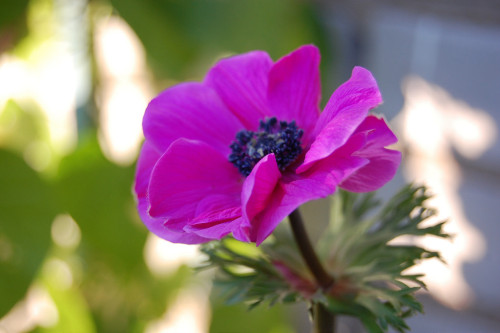
- Mister Fokker - this anemone grows well on light sandy or loamy soil, on a warm and well-lit plot. With regular but not too abundant irrigation raising up to 30 cm in height. On each stem blooms on a single purple flower with a diameter of about 15 cm of a simple form with smooth petals. The flowering period begins in mid-April and early May.

- Nollandia - on a stem with a height of about 30 cm blooming a large bright red flower. Petals of simple shape, smooth, in the center around the bunch of black stamens and pestles you can see a white ring. The appearance of Anemone Holland very much resembles a major poppy.

- St.brigid is a semi-state and terry crown of anemone with a stalk of up to 30 cm high, abundantly covered green foliage. Single flowers are very large and outdoor resemble peonies flowers. With autumn landing, the Holy Bridge is blooming in May-June, with a spring - in July-August. The variety looks equally well both in landscaped compositions and houses in a pot.
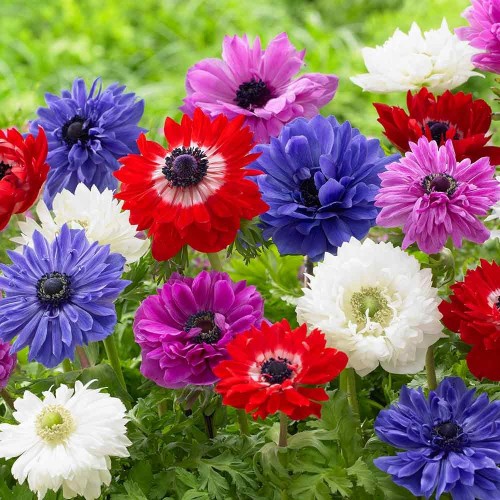
- The Governor is a low compared to the rest of the plant up to 23 cm with numerous semi-world flowers with a diameter of up to 7 cm. In each of them, up to 70 petals can be counted, which makes flowering very lush and spectacular. Buds of bright red with white edging at the very base. On one bush may bloom up to 12 pieces.
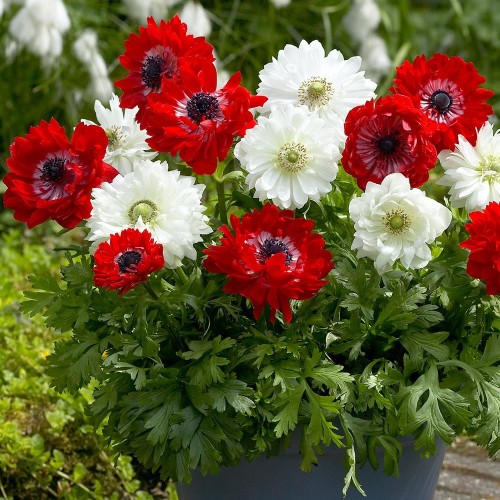
- The Admiral - semi-world flowers with a large number of petals, crowded with a height of 27 cm. On one bush, up to 12 flowers with a diameter of about 6 cm may appear, each of which up to 75 petals.
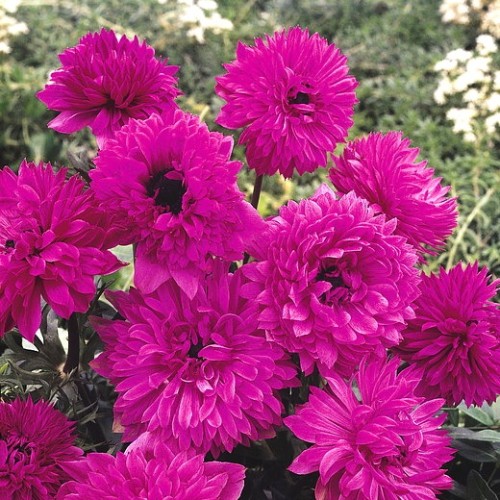
Features of growing anemone crown
So that the lush flowering shrewd your gaze as soon as possible, planting plants is needed under winter, if you are ready to wait, take the landing of the anemone with a crown in spring. However, before this it is necessary to buy high-quality planting material and how to prepare it. Of the competent preparatory work depends most of the success, but, unfortunately, many do not take it into account, after which they are disappointed in the anemons and refuse their breeding. Since it is a bulbous plant, you need to buy these very bulbs. Choose them very carefully, rejecting too small and dedicated stains. If there are stains on the bulb, it means it is amazed by mold or other diseases, and nothing can grow out of it.
Germination of tubers anemone crown
Before landing anemone, a born in a pot or open ground needs to soak tubers for a while. It is necessary to do this in a special way, not lowering bulbs in the water. If this is done, the planting material simply will behave in itself, and then rotates.
How to prepare landing material:
- Pour in the saucer slightly stunned, but not boiled water with a temperature of about + 30s.
- Add a drop of zircon or epine into the water. Natural or chemical growth stimulants can also be used, such as Extra Ribav or Aloe Juice. You need to "wake up" a bully to start developing.
- Cut the small flap of cotton fabric or gauze, wet it in warm water from a saucer and spit slightly so that the cloth is wet enough, but it does not drink from it.
- Call the bought onion anemone into this tissue and put in a plastic bag. Leave at room temperature for 4-5 hours.
- At this time, prepare a pot or box where tubers will germinate. Pour in it a garden land mixed with sand in a 1: 2 ratio. The land should not be so much fertile as very light and well-draned.
- Pour the land in a pot and put the clumsy tubers on it, without sprinkling their land.
- Cover the pot with polyethylene or glass and put in a cool place with a temperature of 12-14C. From time to time, check their condition and moisturize the ground from the pulverizer.
- After 10-14 days, the bulbs can be clearly distinguished by the growth points and small roots. And only at this stage you can figure out which side to plant them. This is the mistake of most novice gardeners - they bury the bulbs, and they simply die.
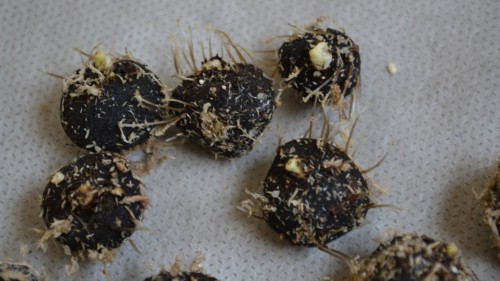
- Those tubers on which small sprouts were crushed can be searched on separate pots. If the growth points have not yet appeared, continue to support soil moisture and low temperature indoors. Sooner or later, all healthy tubers will definitely germinate, but there are no demand from poor-quality and rotten and demand.
Landing anemone koronum
After the transplantation of young anemone, it is necessary to continue to maintain in the room not too high the temperature in the range of 12-14c. Otherwise, the color sprouts will not work and will develop very weak, which at best will lead to their clogs after the dissolution of large flowers, and at worst to death. Also, with too warm conditions, tubers can be contrary. After complete rooting and the appearance of full-fledged sprouts, it is possible to carry plants into a warmer room or plant in open ground.
If you keep flowers in the house, put pots with anemonia in such a place where the sun's rays will fall all day or at least 5-6 hours. After breaking the buds, you can cut several flowers at will, it does not hurt a general state of the plant. After biting, do not cut off the foliage so that the plant is absorbed through it solar energy - photosynthesis will strengthen the bulbs for the future season. In late August-early September, the anemone starts the period of natural peace. Now you can cut off the foliage and leave the plant alone for several months, having rearranged it into the cool room.
In the open soil, tubers can be planted immediately after soaking:
- Pick up a place on a plot with well-drained soil. It is easy to determine this: if a few hours after the rain, there are still a puddle after the rain, then the earth does not well miss moisture well, and it is necessary to try happiness elsewhere, or step up soil and mix it half with river sand. Together with the sand, it is not bad to make a body in the form of moss, peat, compost, crushed bark or overworked compost. And even though the anemone is not too demanding towards the fertility of the soil, never hurts it to easily help it (it is important not to overdo it and remember that the main thing is good drainage).
- Survey the anemone on a well-lit plot, where the sun's rays fall at least 4-5 hours per day.
- Digitized by the instructions of the Tubernell Anemone described over the described instructions in shallow pits at 3-4 cm. So you protect them from birds and dryness and do not create an irresistible barrier to germination if the tubers are located upside down.
- Pretty Moisten the Earth and cover the bed with a film for a week. The first signs of life will appear after 10-14 days, after which it will remain only timely to water the flowers and wait for the dissolution of buds.
Anemone core care
Coronated anemones are particularly well feeling at sunny sites, but if necessary, can grow in half. The only factor with which the plant will not put up - the increased acidity of the soil, so if necessary, neutralize it by entering into the ground some dolomite flour. Perhaps you will be interested in an article " Dolomite Flour: Application, Features" Also, the flower will not be delighted, if you put it in a nic, because there will be moisture there, and there can be no speech about good drainage of the soil. The optimal option is light and loose soil with an alkaline or neutral reaction.
Unlike the convergence, leading to the death of the anemone, the lack of moisture they carry quite painlessly. By and large, the plants need regular watering only during periods of intensive growth and swelling of buds, and even if the weather was arid. If it rains periodically on the street, it is not distracted by watering.
As for feeding, the anemone is suitable for the anemone, which should be made before flowering. Diseases and pests very rarely draw attention to Anemone and almost always bypass, so in this regard, care does not cause any problems. Under favorable development conditions around the main tuber, child small bulbs will be formed, which can be used for subsequent reproduction. It is possible and seed reproduction, but such anemones will bloom only on the second or third year. If it suits you, choose to collect seeds only the brightest flowers, because the coloring of the offspring will be noticeably paler.
The crown of the anemone is not adapted to wintering in the ground, and even a good shelter will not protect the tubers from the freezing, so it must be turned off in the fall. It is necessary to do this after the end of the flowering period when the stems will die a bit, and the leaves are taped. Carefully dig up with your hands, smooth the extra earth and spread it in a well-ventilated place for drying. Keep the material in paper bags or fabric bags, shifting sawdust, sand or peat, at a temperature not higher than 7c.

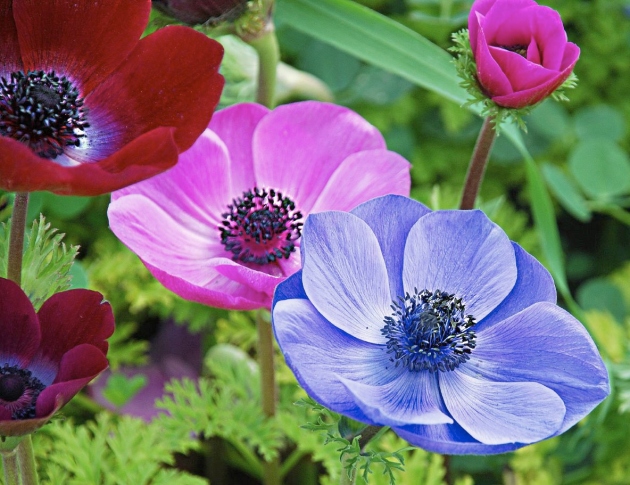
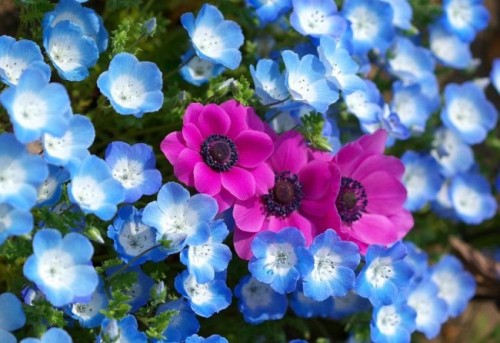
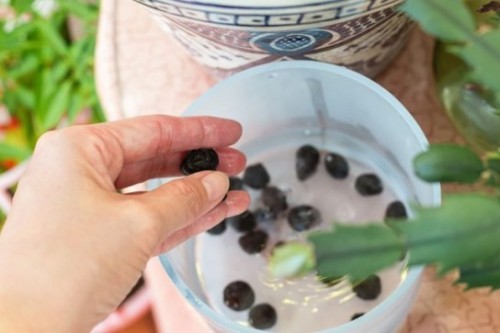
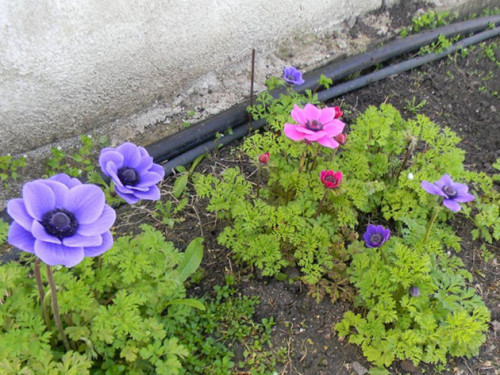

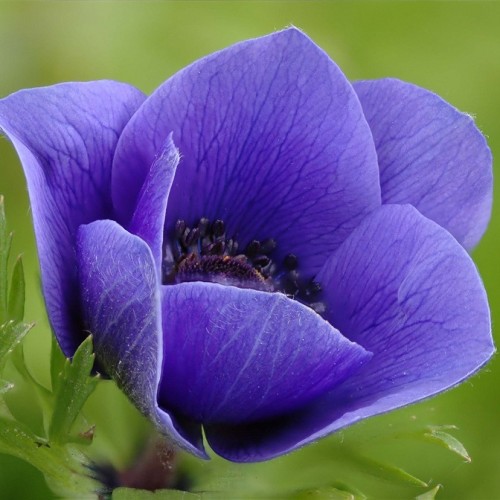
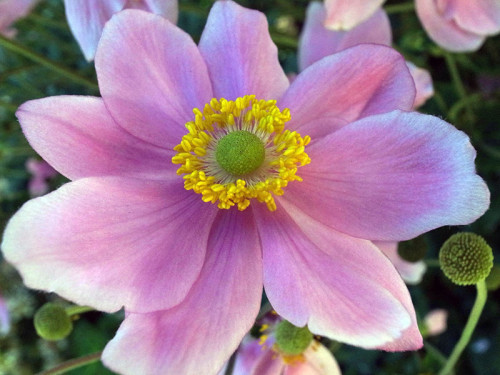
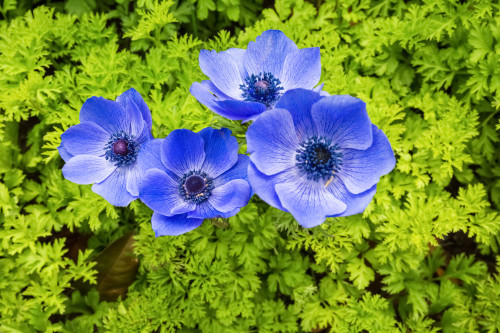
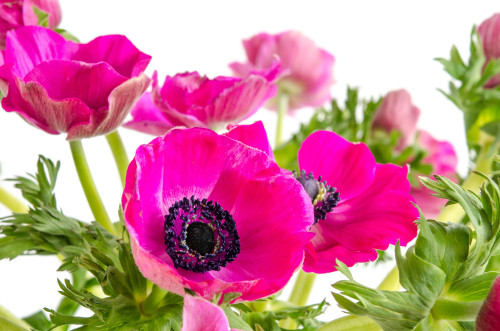

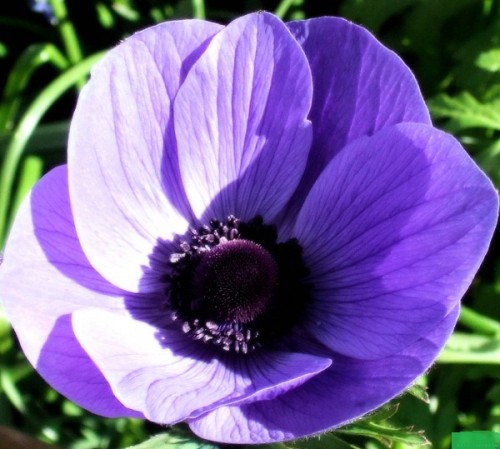












 Start a discussion ...
Start a discussion ...